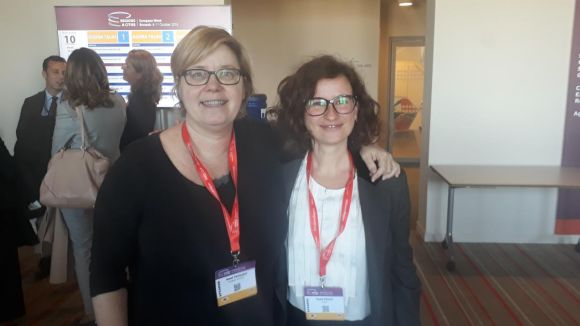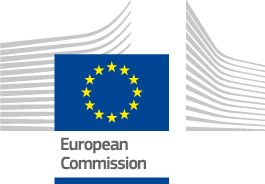
Childcare is considered to be a highly personal topic with no ‘one-size-fits-all’ solution. So where does the European Union fit in?
Following on from a workshop on local approaches to improving childcare opportunities, the Moderator and Gender Equality Policy Officer, Greet Vermeylen answered a few questions about her unit’s work on childcare and why is it so important for Europe.
How do you examine the state of childcare across the EU?
Greet Vermeylen has mentioned the three elements which determine the way childcare is assessed, across every member state. “Firstly, there is availability. A legal right to childcare from a very early age is important. Secondly, it has to be affordable. Either at very low cost or offered by the member states or a reduction for less-fortunate groups. And lastly, it has to be high quality. Not only the educational program but also how you involve the parents, how you train the staff working with children and make sure they get continuous training,”-she adds.
The officer explains that, since the early 1990s, Denmark has had a very integrated approach. Back then, Danish people have decided that it is important to enable women to continue pursuing their careers without any difficulties even after becoming mothers.
She mentions that, by making childcare nearly obligatory, and so normal, you can reach everyone. If childcare is only for a very small group of children with parents who can afford it, then the system wouldn’t be fair to lower-income families. To this date, the country covers three-quarters of the cost of child care, more for families who would otherwise struggle to maintain work-life balance.
Why do some countries struggle to provide quality childcare?
Greet Vermeylen adds that investing in childcare structures costs a lot. For some countries, it is very normal that mothers—only mothers—stay at home with their children until they are older.
But even these countries are changing their policies. They are starting to develop the infrastructures. “It’s not only having a school and well-paid staff. Childcare can’t be too expensive also. Doing all of that requires not only time but a big financial investment. The infrastructure development and legal right to a childcare is a good start. There is also the matter of building confidence that parents can leave their young children there.”
Malta is one of the countries with the lowest amount of the female workforce. It is really normal that all mothers, and even all women, stay at home. “Decision-makers are determined to invest in developing and exploring childcare options. Already they’ve seen some positive impact, so I think we will see more change to come.”
Are there cultural hurdles to implementing childcare policy?
“Yes and no. It’s an excuse we hear a lot. Maybe there is a hidden demand which people are unaware of. That is something we are trying to highlight. We fund projects which look at unpaid labour at home and how it’s shared with fathers, and we encourage fathers to be involved. We try to break this gender stereotype.”
In countries where the idea is introduced, things don’t change from one day to another, but they improve gradually. For example, in Germany, where some women would normally stay at home after having a child, things are changing. More women combine work with caring for their little one(s). They might start with a part-time and then change to a full-time job. “But, we don’t necessarily want to promote only that option because part-time work is often designated for certain types of jobs only. We want to promote the right to a full-time childcare for all kids and see how it functions in each country,”-she adds.
Why not promote the idea of “baby Europeans”? What is that exactly?
“Some of us were joking about Erasmus for toddlers! (laughs) Of course, that’s not possible, but there is Erasmus Plus for professionals working in kindergartens/nurseries, which we are trying to promote. They move to work abroad and come back with ideas which they might use in their programmes.”
But still, many people aren’t aware of the EU involvement in projects like these.
“I don’t think it's a problem. The biggest thing about these structural funds, the European Social the European Regional or the Agricultural Development Fund, is they have to work from the bottom to the top. Projects are proposed locally or regionally and then the member states decide what we—Europe—should do. Sure, we can do some analysis, but I think it’s better carried out by the individual member state or region. These projects are always co-funded by the European Union, but never 100%. It would be nice to get some recognition recognised, but I think it has to start at the grassroots level, rather than the other way around.”
In the conference, you mentioned how passionate you are about this subject. Where does this passion come from?
“I think childcare and work-life balance make life better for every citizen in Europe. If we want men and women to be able to work, we need to make sure there is a sufficient social infrastructure to give people the choice to work or not. The balance needs to be reasonable. Otherwise, you’re either burnt out, or you push the grandmothers back home.”
The officer adds that there isn’t just one generic solution to this problem as childcare is different in every country. “I find it interesting that you have these different problems, and how the very innovative solutions come from very local initiatives.” Every child has different needs and that is what makes childcare so interesting, she adds. In her opinion, a quality kindergarten/nursery really helps kids develop on so many different levels. “I’m not saying parents can’t do it themselves. It’s for all citizens, not only a number of privileged ones. And I think having accessible childcare is really crucial for Europe.”
Written by: Kristie Pladson
Edited by: Bruna Tomsic



